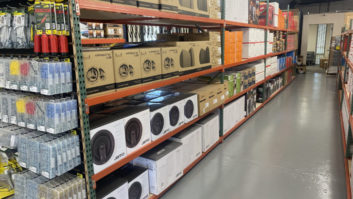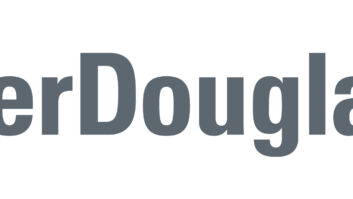Sales of HTiB systems continued to grow in 2004, driven in large part by consumers’ desire to simplify their buying decisions and simplify setup, according to separate research reports.
HTiB sales rose in units and dollars for the year-to-date period ending September, according to NPD Group/NPD TechWorld, which based its findings on POS tracking of more than 150 online and brick-and-mortar outlets, excluding industry giant Wal-Mart. Unit sales rose 18.7 percent to 1.56 million, on dollar gains of 0.3 percent to $500.1 million (see table 1). That followed double-digit unit gains in calendar 2002 and 2003, double-digit dollar gains in 2002, and a slight dollar dip in 2003 because of declining average wholesale prices, NPD’s statistics show (see table 2).
In a separate consumer survey, entitled “Five Consumers To Watch,” CEA concluded that “consumers generally want products that are ready to work as soon as possible.” Ninety percent “like technology to be ‘ready to go’ without a lot of setup or customizing,” the January 2004 report said. “Further, fewer than half (45 percent) agree that when it comes to electronics, they prefer to buy components individually rather than a package where everything comes bundled together.”
CEA also found that 74 percent of consumers called it “highly important” that home entertainment products have “as few wires and connections as possible.” That’s the same percentage of consumers who cited “great visual/audio quality” as highly important. The consumers gave these attributes an eight, nine or 10 on a scale of one to 10, with 10 representing the highest importance.
In a separate June 2004 consumer survey, CEA determined that consumers of all demographic stripes prefer the simplicity that HTiBs can offer. The number of component-audio-owning households is in decline, the survey found. The CEA and concluded that said that “these results suggest that consumers may indeed be looking to bundled audio solutions for their surround-sound needs instead of purchasing separate components and speakers.” The demographic profile of component and HTiB buyers is similar, CEA added. “Budgets and enthusiasm for audio aside, the demographic profile of the audio bundle owner is not materially different from the audio separates owner.”
Home theater package systems and component audio products, CEA said, “are both typically found in homes with a male head of household, and the owners of these products are aligned closely in terms of income, age and presence of children.” The report continued, “When you get down to brass tacks, the home theater buyer overall is likely looking for value — which can be found in both the HTiB and audio separates arenas.”
The ownership survey found that the number of households owning a component surround-sound receiver fell to 26 percent from 28 percent, compared to the year-ago period, representing an installed base of 32 million units. The number of households owning at least four component speakers to deliver surround sound fell to 28 percent from 29 percent.
The installed base of HTiB systems, meantime, was 35 million, slightly more than receivers’ 32 million units.
In CEA’s estimation, HTiB sales enjoyed their fifth consecutive year of growth in 2003 and edged closer to audio components in sales volume. In 2003, factory-level HTiB sales rose 7% to $961 million, on unit volume of 3.62 million units (see table 3), compared to $1.14 billion in sales of home audio components, including receivers, speakers, amplifiers, preamplifier processors and tuners.
In their HTiB systems, consumers want the package to include a DVD player to further simplify the buying process. HTiBs equipped with DVD players and changers accounted for 78.9 percent of the HTiBs sold at the retail level in the January 2004 to September 2004 period, up from the year-ago 74.2 percent, according to The NPD Group (see table 4).
For the January 2004 to September 2004 period, total retail-level HTiB sales hit 1.37 million units, with 78.9 percent packaged with a DVD player or changer. Among those equipped with DVD, 49.9 percent were equipped with a DVD changer, NPD also found
In dollars, DVD-equipped models accounted for 49.9 percent of dollar sales, down a notch from the year-ago period’s 51 percent, NPD found.
CEA HTiB Sales
% HTiBs Sold With DVD At Retail
Retail-Level HTiB Sales
HTiB Sell-Through













